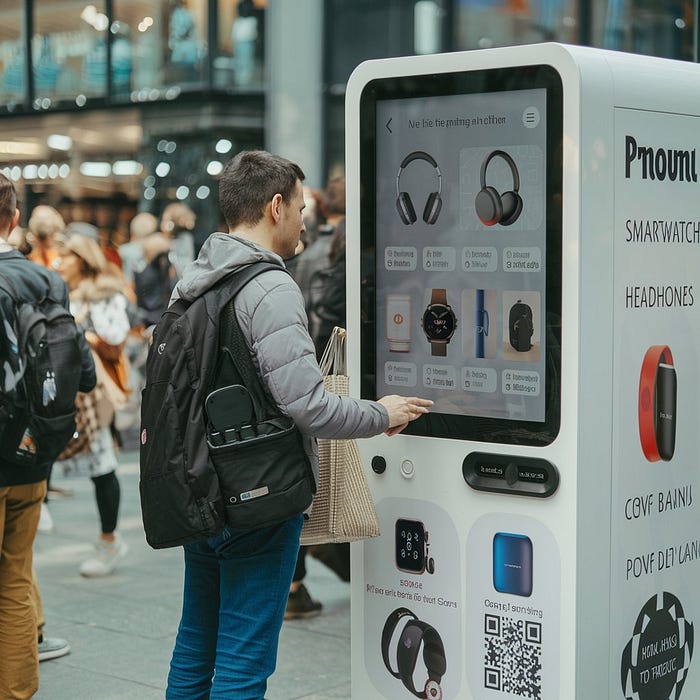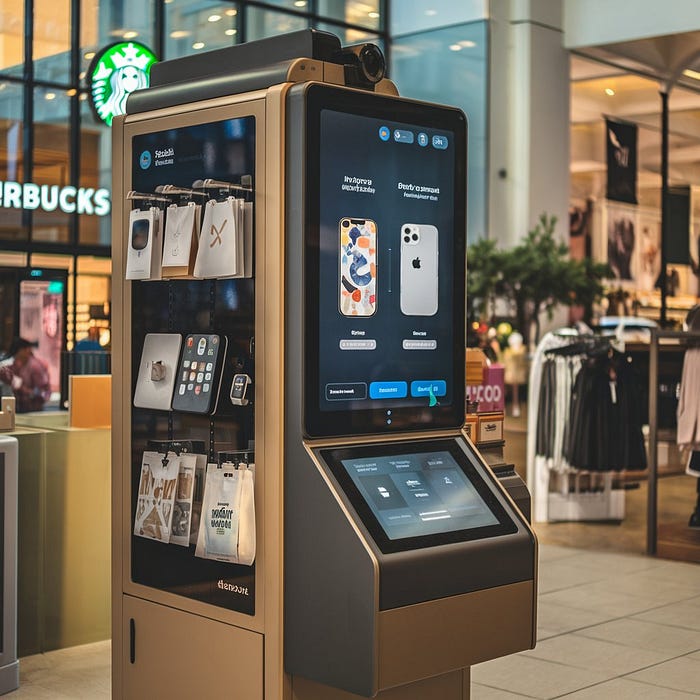Best Locations: Where To Put Your Retail Kiosk.

Choosing the right location for a retail kiosk is more than a logistical decision — it’s a strategic move that directly influences sales, brand visibility, and customer engagement. A kiosk’s location determines how many people see it, interact with it, and ultimately become customers. In today’s competitive retail environment, where convenience and accessibility are paramount, the importance of kiosk placement cannot be overstated. Whether it’s capturing the attention of hurried travelers, festival-goers, or urban dwellers on busy streets, the location of a kiosk can be the deciding factor in its success or failure.
High-Traffic Areas
Retail kiosks thrive in environments where foot traffic is abundant. These high-traffic areas naturally expose the kiosk to a larger number of potential customers, increasing opportunities for engagement and sales.
Shopping Malls
Shopping malls are one of the most popular and effective locations for retail kiosks. They offer a controlled environment with consistent footfall, especially on weekends and holidays. Malls attract a wide demographic — families, teenagers, young professionals — who are already in a buying mindset. The proximity to anchor stores and food courts often provides strategic placement opportunities where people naturally congregate. Additionally, mall-goers are usually more open to browsing, which encourages impulse purchases, making kiosks a natural fit.
Airports and Train Stations
Transportation hubs like airports and train stations are bustling with a captive audience. Travelers often have time to spare while waiting for departures or during layovers. This creates a golden opportunity for kiosk operators to attract attention. Retail kiosks in airports tend to do particularly well with travel-related goods, snacks, tech accessories, and last-minute gifts. The key advantage here is the limited shopping options within these spaces, which gives kiosks a competitive edge.
Busy Streets and Plazas
Urban centers with high pedestrian traffic — think downtown plazas, main streets, and city centers — are ideal for kiosks targeting impulse buyers. These locations offer maximum visibility and attract a diverse group of people including commuters, tourists, and local shoppers. A strategically placed kiosk in a busy area can generate high-volume sales, especially if it offers convenience items or trendy products. Street locations also allow for creative, eye-catching kiosk designs that can enhance brand presence and draw in curious customers.
Seasonal Events
Temporary retail kiosks can see massive success when strategically placed at seasonal events. These events attract large crowds, often in a festive or celebratory mood, creating a ripe environment for retail success.
Festivals and Fairs
Festivals and fairs provide a unique opportunity to showcase themed or seasonal products to a diverse crowd. Attendees are typically in a relaxed, spending-friendly mindset and open to discovering new brands. Whether it’s food, fashion, or quirky merchandise, kiosks at festivals can leverage the event’s theme and energy to connect with customers in a memorable way. Themed décor and limited-time offers can significantly enhance sales.
Sporting Events
Large sports gatherings offer another lucrative avenue for retail kiosks. These events bring in passionate fans who are likely to spend on merchandise, memorabilia, snacks, and drinks. Stadiums and arenas have limited vendors, allowing kiosks to stand out and serve a vital role. Sports fans often seek souvenirs and branded apparel, and kiosks can cater to that demand quickly and conveniently.

Holiday Markets
Holiday markets are not only about shopping — they’re an experience. Kiosks in these settings benefit from the festive atmosphere, where people are actively looking for gifts and unique items. Handcrafted goods, winter wear, holiday decorations, and specialty foods perform particularly well. The limited-time nature of these markets also adds urgency to purchasing decisions, helping kiosks drive quick sales.
Partnership Locations
Another smart strategy is to place kiosks within or near existing businesses. These partnerships can provide a stable flow of customers and shared marketing opportunities.
Cafés and Restaurants
Cafés and restaurants are frequented by a wide demographic throughout the day. Placing a kiosk near such establishments can attract diners while they wait or after they eat. Products like books, accessories, cosmetics, or quick gifts can do especially well in this setting. The relaxed, seated environment of cafés also allows for better product browsing and customer interaction.
Fitness Centers and Gyms
Gyms and fitness centers attract a health-conscious, active demographic that may be interested in wellness-related products. Placing a kiosk in a gym lobby or entrance can be a powerful move for brands selling supplements, fitness gear, healthy snacks, or tech gadgets like fitness trackers. Since gym-goers often follow routine schedules, kiosks in these spaces can enjoy a steady stream of repeat customers.
Co-working Spaces
Co-working environments are hubs of creativity and professionalism. They offer a high concentration of professionals and entrepreneurs who value convenience and innovation. Kiosks in these spaces can cater to needs such as tech accessories, productivity tools, or premium snacks and beverages. Additionally, the collaborative nature of co-working spaces makes them ideal for word-of-mouth promotion.
Online Presence and Digital Integration
In today’s digital-first world, physical kiosks should not operate in isolation. Integrating online strategies enhances reach, engagement, and sales.
E-commerce Integration
Kiosks can act as an extension of an e-commerce operation. They can serve as physical pickup points for online orders, returns, or product demonstrations. This not only saves on shipping costs but also drives foot traffic to the kiosk. Shoppers who come for a pickup may make additional impulse purchases, maximizing the kiosk’s value.
Social Media Marketing
Promoting kiosk locations and offerings via social media can create buzz and drive visitors. Platforms like Instagram, Facebook, and TikTok are excellent for showcasing new products, offering promotions, and engaging directly with customers. Geotagged posts, stories, and influencer partnerships can highlight kiosk presence and encourage foot traffic.
Data Analytics for Location Performance
Monitoring the performance of each kiosk location through analytics can help determine what works and what doesn’t. Metrics such as foot traffic, conversion rates, peak hours, and best-selling products provide valuable insights. This data can guide future placement decisions, optimize inventory, and enhance overall strategy. Technologies like heat maps, customer feedback tools, and POS systems can play a key role in this analytical approach.
Conclusion
The success of a retail kiosk is heavily influenced by its location. High-traffic areas offer visibility and impulse buying opportunities; seasonal events provide access to enthusiastic and varied audiences; partnerships with existing businesses open up new demographics; and digital integration amplifies reach and engagement. By strategically selecting locations based on target audience, foot traffic, and sales goals, businesses can significantly enhance the performance of their kiosks. In an increasingly experience-driven and convenience-focused retail world, smart location choices are more important than ever for kiosk success.
Comments
Post a Comment